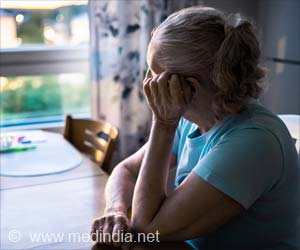Genetic experts of Johns Hopkins joined the aid efforts by identifying more than 70 bodies that were recovered after the Hurricane Katrina
Genetic experts of Johns Hopkins joined the aid efforts by identifying more than 70 bodies that were recovered after the Hurricane Katrina. The devastating natural disaster, which hit Louisiana and Mississippi on August 29, took more than 1,200 lives. Even though most of victims were identified by their families and buried, the remaining was identified using DNA analysis.
Using experience gained in DNA analysis of human remains after the terrorist attacks on Sept. 11, 2001, Hopkins epidemiologists and genetic counselors are helping Louisiana state officials with the complex task of collecting data on family history, a key step in the complex system of DNA testing that state officials must use to match the dead to some of the families of more than 2,000 people still listed as missing from the disaster.According to the Hopkins experts, the DNA identification process following Katrina is a more complex job than initially thought.
That is because many of Katrina's missing victims lost their identifying personal effects in the disaster as well. Items such as toothbrushes and hairbrushes, which could contain hair and saliva samples useful in DNA testing, were often contaminated or destroyed by the flooding. Many medical and dental records normally used to match dead bodies with names of the missing were destroyed, leaving few clues behind as to whose remains were found. All of these make identification difficult - without the aid of DNA testing. Making matters worse, family members whose DNA is required to make a match were also displaced by the hurricane, making contact difficult and adding delays to scheduling interviews and appointments for genetic testing.
"In today's world of blended families and multiple marriages, not all siblings are biologically related to one another. And trained interview techniques are needed to separate the correct blood relationships involving DNA from the correct social relationships that do not involve any genetic material."
In DNA-marker testing, a person's unique genetic makeup is matched against other previously known samples or, if none exist, samples taken from family members, looking for unique genetic traits or markers specific to the individual or family. The results from the DNA analysis can be used alone or combined with other information, such as body location and distinguishing features, for the state coroner to make an official identification.
Compiling a genetic picture of the family, however, requires an accurate construction of the family tree, so that the minimum amount of genetic information needed can be obtained from siblings or parents, or from cousins and grandparents.
Advertisement
A person's DNA contains all the genetic information passed down from their parents, but slightly different - though mostly similar - combinations are passed along to siblings. Recognizable but distinct patterns can be seen in cousins, but with greater difficulty, and often requiring specialized tests. Statistical methods are used to compare and match DNA samples to determine how likely it is that genetic markers for an unidentified deceased person fit into the pattern of genetic markers observed in relatives of someone reported missing.
Advertisement
"One of our major tasks is to contact the families of those still reported missing and to obtain the DNA samples that will give us the best chance to identify their loved one," says Bailey-Wilson.
But Johnson takes a much more simple view of her potential and willingness to offer assistance. When asked to describe her motivation for volunteering, she says, "Just knowing of the grief these families are going through is what motivates me. This is something I can do in my own small way to help out."
--Eurekalert






